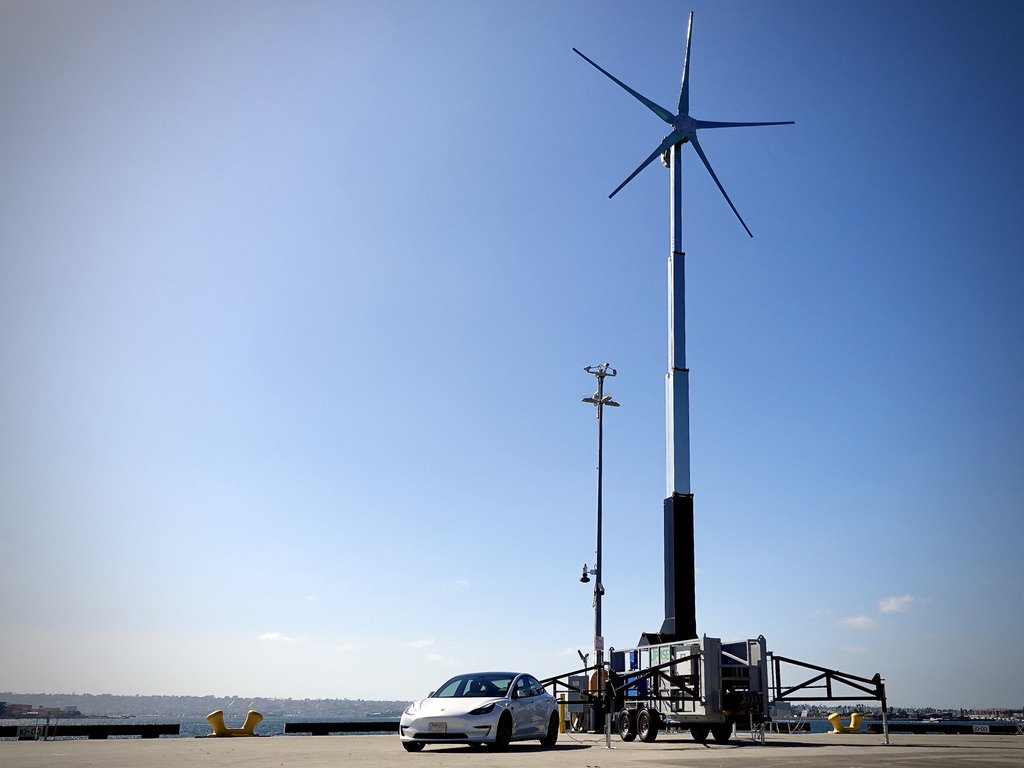With a High Wind Advisory on the horizon for us here in San Diego, it seemed like a good time to talk about how the Uprise Mobile Power Station protects itself in high wind conditions.
For those familiar with the wind industry, "cut-out speed" is a common metric that indicates the wind speed at which the turbine sheds energy to prevent damage.
The Uprise portable wind turbine takes a different approach that could be referred to as "cut-out RPM" or "cut-out torque". This is because we use our proprietary power-control systems to control the rotor RPM so that it does not exceed 159. This is what we refer to internally as our "Power Max" programming that also facilitates our "Dancing with the Wind" variable wind technology. The reason this is important is the kinetic energy in a given wind speed will vary dramatically with elevation and the associated diminishing air density. Therefore, since the torque generated is not only a function of wind speed but the density of the wind, a max wind speed at sea level is going to be lower than a max wind speed at mile-high elevation.
Nevertheless, if the energy in the wind exceeds our power control system's ability to control rotor speed, then we have multiple lines of defense.
First, we have a hydraulic disc brake on the main driveshaft that will bring the rotor to a stop.
Second, our active yaw motor can yaw the rotor out of the oncoming wind.
Third is the lay-down feature, where the turbine can lower the mast, bringing the rotor to ground level to protect the system.
And it does all of this autonomously.
We hope that you found this explanation interesting and if there are any other features that you're curious about, please leave those in the comments.


